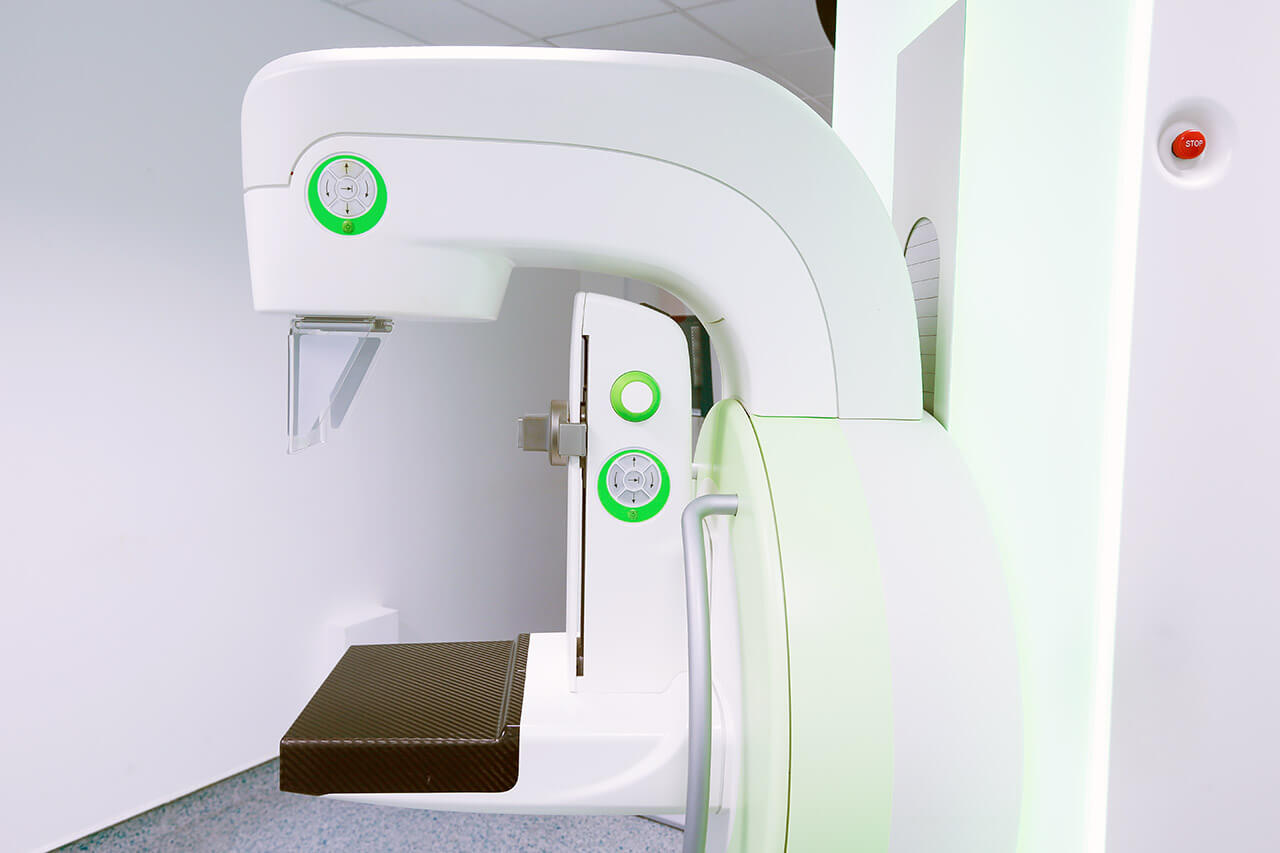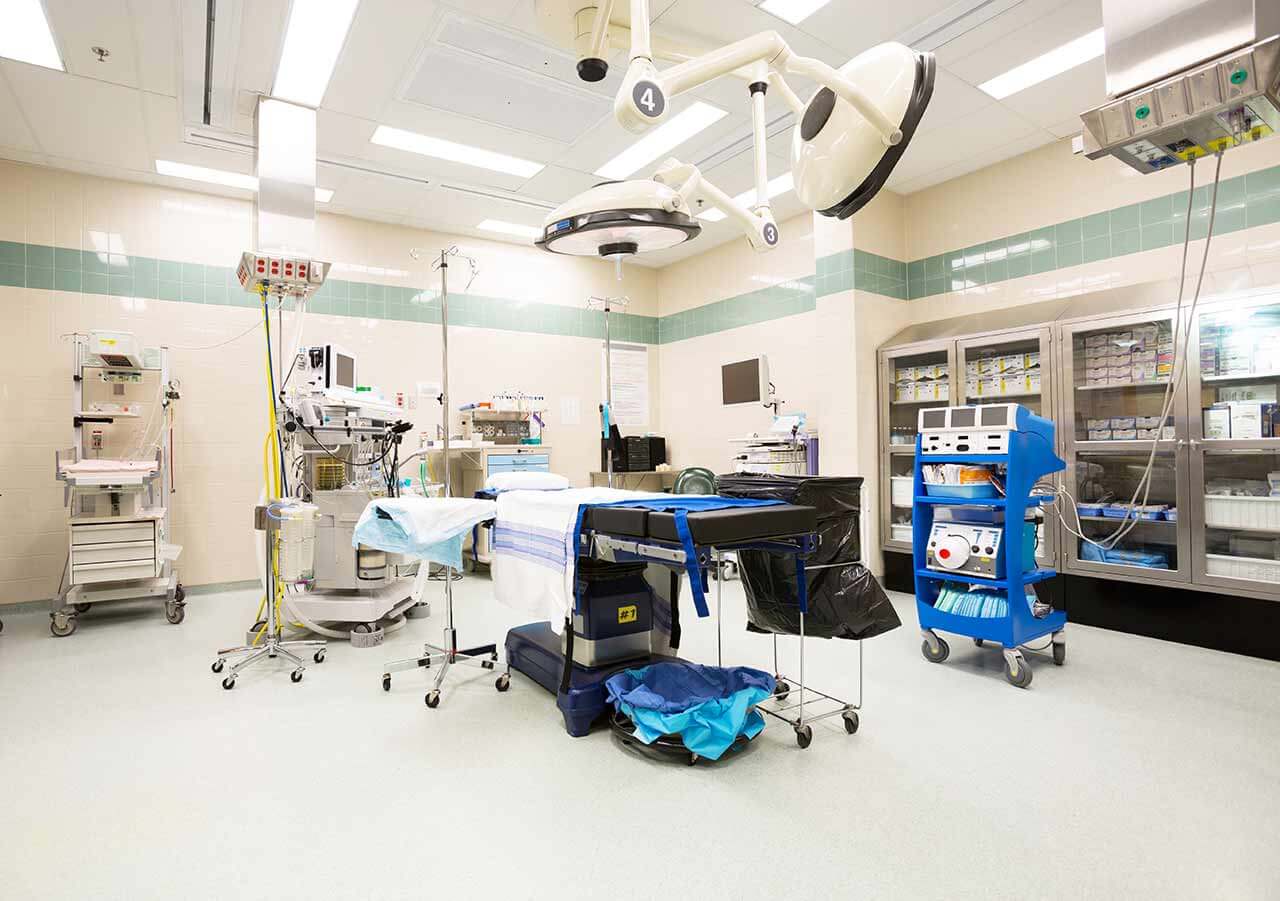
About the Department of Radiation Oncology at Clinic de Genolier Genolier
The Department of Radiation Oncology at the Clinic de Genolier Genolier offers all modern types of radiation therapy against malignant neoplasms of various localization. The department is fitted out with state-of-the-art equipment for the most optimal radiation therapy, adapted to the individual needs of each patient. The treatment is provided in interdisciplinary cooperation, which is the key to the department’s successful clinical practice. The Chief Physician of the department is Prof. Dr. med. Oscar Matzinger.
It should be noted that the department ranks among the best medical facilities of this kind both at national and international levels. The reason for this is the progressive equipment, competent and experienced specialists, as well as the regular introduction of innovative treatment methods into the clinical practice.
The department specializes in the following types of radiation therapy:
- Intensity-modulated radiotherapy (IMRT). Today, this type of therapy is one of the most effective and modern methods of dealing with benign and malignant tumors. It can even affect the tumors that are not amenable to the surgical treatment or are located in hard-to-reach places. The essence of this method lies in the irradiation of a tumor with an exactly calculated dose of radioactive radiation. The therapy is preceded by a thorough diagnostics using computed tomography and detailed focusing of the controlled radiation beams. Computer imaging helps the doctor to determine the clear boundaries of the neoplasm that separate it from healthy tissues, which in turn avoids the irradiation of vital organs and tissues located directly next to the tumor. The side effects and complications characteristic of radiation therapy are minimized with this method, whereas the patient’s rehabilitation period is several times shorter than in case of traditional external radiation therapy. In the process of irradiation, the computer system continuously monitors the patient's condition, the course of tumor irradiation and regulates the intensity of the radiation. This type of radiation therapy is widely used in the treatment of prostate cancer, neoplasms of the head and neck, central nervous system. In addition, the method can be effective in the treatment of malignancies of the breast, thyroid, lungs, gastrointestinal tract, female genital organs, as well as certain types of sarcomas.
- VMAT RapidArc radiotherapy technology (volumetric modulated arc therapy). The RapidArc technology significantly reduces the exposure of healthy organs, and also reduces the overall procedure time to a few minutes. Irradiation can be carried out at any possible angle, in the range of 360 degrees. Due to this, the volumetric distribution of radiation dose is achieved, which maximally corresponds to the shape of the tumor. In the RapidArc technique, the radiation dose is optimized so that the tumor receives the maximum dose, and healthy tissues receive the minimum dose, while the probability of recovery increases, and the negative effect of the treatment decreases. Consequently, the treatment process is dynamical and quick, which also reduces the errors that occur during patient movements. The therapy is conducted under the imaging guidance, with the possibility of changing the shape and intensity of the beam of rays and the angular velocity of accelerator rotation. The accelerator rotates one or several times around the patient, delivering radiation doses to a tumor from different sides. During the RapidArc session, according to a given program, the accelerator continuously moves the thinnest metal plates (multilobe collimator), which protect healthy tissues. The method is often used in the treatment of prostate cancer, brain, abdominal tumors.
- Intra- and extracranial stereotaxy. This method is a surgical operation that consists in the precise destruction of the pathological formations located deep in the brain, after determining their location in the three-dimensional coordinate system. The technique is an excellent alternative to conventional brain surgery, which poses the risk of the development or aggravation of neurological symptoms due to the peculiarities of the surgical access.
- Intraoperative radiation therapy. This type of therapy is performed at the early stages of oncological diseases. It implies the removal of the bulk of malignant cells and immediate irradiatiation of the surrounding healthy tissues involved in the tumor process using a special radiation source. Thus, the remaining cancer cells receive a single large dose of radiation and die from it. The procedure takes place in the operating room under general anesthesia.
- Endorectal contact radiation therapy (brachytherapy). This is a method of radiation therapy, in which the radiation source is placed in the body, near or directly into the tumor. This is the difference of the method from remote radiation therapy, where the source is located outside the body and the radiation passes through the whole body. Therefore, the contact radiation therapy affects the surrounding healthy tissues much less, thereby reducing the risk of side effects. Contact radiation therapy can be used both independently and in combination with other treatments, such as surgery, remote radiation therapy and chemotherapy. This method of fighting cancer is considered one of the most effective.
- Other types of radiation therapy
Curriculum vitae
Higher Education and Postgraduate Training
- 2015 Professorship, University of Lausanne.
- 2011 Level 3 GCP (Good Clinical Practice) Certification, Switzerland.
- 2011 PD, University of Lausanne.
- 2006 Board certification in Radiation Oncology, Swiss Medical Association.
- 2002 Doctoral Degree in Medicine, University of Lausanne.
- 1998 State Medical Examination.
- 1992 - 1998 Study of Human Medicine at the Faculty of Medicine, University of Lausanne.
Professional Career
- Since 2019 Head of the Department of Radiation Oncology at the Clinic de Genolier Genolier.
- 2016 - 2019 Head of the Interdisciplinary Cancer Center (Oncology, Radiation Oncology and Psycho-Oncology).
- 2013 - 2016 Chief Physician, Department of Radiation Oncology, Hôpital Riviera-Chablais.
- 2011 - 2013 Attending Physician (focus on the treatment of tumors of the gastrointestinal tract, lungs and skin), Department of Radiation Oncology, Lausanne University Hospital.
- 2009 Head of the Department of Radiation Oncology (focus on the treatment of tumors of the gastrointestinal tract, lungs and skin), Lausanne University Hospital.
- 2008 - 2009 Quality Assurance Officer for Radiation Therapy, European Organisation for Research and Treatment of Cancer (EORTC), Brussels.
- 2007 - 2008 Head of the department (focus on the treatment of ENT and lung tumors, as well as melanoma), University Hospital Lausanne.
- 2006 Deputy Head of the Department of Radiation Oncology at the University Hospital Bern.
- 2005 - 2006 Assistant Physician, Department of Radiation Oncology at the University Hospital Bern.
- 2002 - 2005 Assistant Physician, Department of Radiation Oncology at the University Hospital Lausanne.
- 2001 - 2002 Assistant Physician, Department of Radiology, University Hospital Lausanne.
- 2001 Assistant Physician, Department of Oncology at the University Hospital Lausanne.
- 2000 - 2001 Assistant Physician, Department of Internal Medicine at the University Hospital Lausanne.
- 1999 - 2000 Assistant Physician, Institute of Physiology, University Hospital Lausanne.
Memberships in Professional Societies
- Member and Secretary of the Swiss Society of Radiation Oncology.
- Vice President of the Cancer League of the Canton of Vaud.
- Member of the Working Group and Expert at the Federal Office of Public Health (FOPH).
- Committee Member of the Cancer Foundation.
Photo of the doctor: (c) Clinique de Genolier




